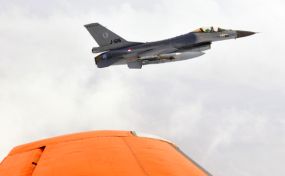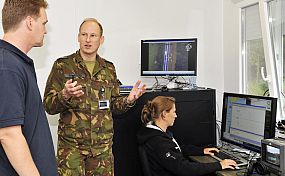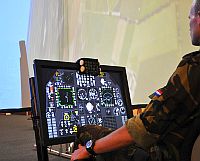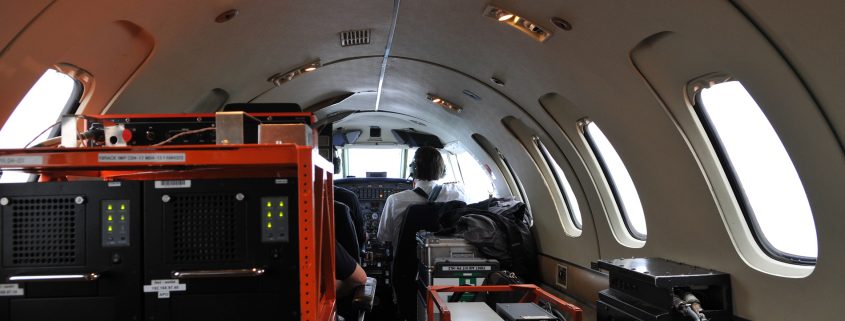At the National Aerospace Laboratory (NLR), the month of September was largely devoted to Purple NECtar 2010 (PN10), a joint military exercise involving the various Dutch armed services. NLR supported this exercise with its Fighter 4-Ship simulator, data links, Multi-UAV Supervision Testbed (MUST), Metro research aircraft, and various other support services.

NLR Metro played the role of unmanned aircraft and was intercepted by F16
Purple NECtar’s primary objective is to create a Joint Common Operational Picture (JCOP), which is an overview image of the military operations as they unfold, displayed on a video screen in the command post. The screen shows various activities of the Operational Commands (naval, land and air forces) as they operate in the area-of-operations. With a JCOP, a commander is provided with an overview of the action, which allows him to take better strategic decisions, as the information made available is both insightful and up to date.
In addition to joint forces between the various armed services PN10 also featured joint exercises with partners from the Public Order and Safety Inspectorate (POS Inspectorate), aimed at improving coordination during accidents and natural disasters, and in counter-terrorism. Purple NECtar therefore also serves as a training exercise for identifying the needs and hidden needs of its participants. It is a joint partnership made possible by the Dutch Ministry of Defence’s Network Enabled Capabilities.
NLR was a key participant in these training exercises, which were lead from a Command Post on the Erfprins Naval Barracks in Den Helder. NLR’s research aircraft, Metro, which played the role of unmanned aircraft, was equipped with a highly advanced electro-optical and infrared camera system. NLR uses this camera during Intelligence, Surveillance and Reconnaissance (ISR) trainings and experiments, in which aerial observations are requested for incidents occurring on the ground or in the water or air.

Through MUST video images and data traffic were processed and manipulated.
Via data links, the Metro maintained contact with the ground control station in Den Helder. For this purpose MUST – NLR’s Multi-UAV Supervision Testbed -was used. Through MUST video images and data traffic were processed and manipulated, in order that this (imagery) information can then appear on the JCOP overview screen, which comprised of three large plasma-screens. In addition, this image-information also appeared on the systems of the participating POS Inspectorate partners.
Unlike last year, NLR’s Fighter 4-Ship research simulator participated in this year’s exercises. This simulator can simulate the collective tactical operations of up to four fighter jets. Two of the four simulated fighter aircraft were physically deployed and linked to the Air Operations Control Station (AOCS) in Nieuw-Milligen (NM). The Royal Netherlands Air Forces’ fighter aircraft and air traffic control is based at AOCS NM. At the Erfprins Naval Barracks, the interaction between the AOCS NM and Fighter 4-Ship systems could be viewed live on the JCOP.
A Command & Control (C2) system is required to monitor the overview images and collect important (battlefield) information. During PN10, the armed services’ various C2 systems were linked with the help of some unique interfaces. In order to store, and ultimately expand, this acquired knowledge in an organized and structurally proficient manner, NLR processes the requisite information with a software programme specifically designed for this purpose.
This year Purple NECtar 2010 (PN) was conducted simultaneously with the Combined Endeavour (CE) and Integrated Command (IC) military exercise. This joint exercise is called CEPNIC 2010. Last year NLR also participated in Purple NECtar 2009. The Ministry of Defence has indicated that it plans to conduct a similar exercise in 2011.

Fighter 4-Ship during Purple NECtar 2010


